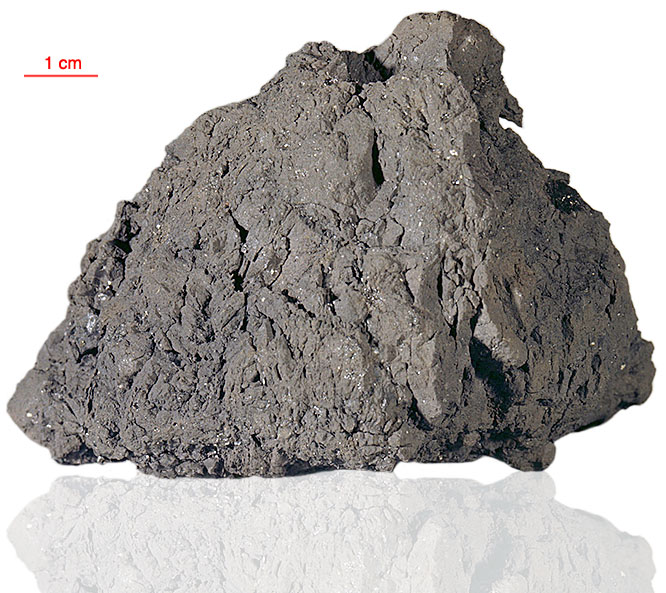
Fact sheet
70175 is an unusual breccia and contains a high proportion of orange glass. The glass includes spheres, shards, veins and matrix. Much of the glass is devitrified, making it appear black. The matrix is compact, with low porosity, and appears to be composed of orange and black glass spheres and shards; mineral fragments (mafic and plagioclase clasts are identifiable), and a black aphanitic lithology. The matrix colour is basic black, the overall thin section colour is red-black. There are no recognizable agglutinates. In addition to the orange and black glass spheres and shards, there are veins and clasts of clast-rich yellow-orange glass. A few mineral clasts occur associated with the glass (rotations 1 & 2). Ilmenite is present, but is very fine-grained and skeletal.
The sample weighed 339.6 grams before analysis and has not been dated.
Further details of this and other Apollo samples are here: http://curator.jsc.nasa.gov/lunar/
Apollo 17, the final manned landing mission, had two objectives: to obtain samples of ancient rocks from the lunar highlands and to look for evidence of younger volcanic activity on the valley floor.
This small Collection contains material deriving from both periods, including igneous rocks around 4.3 billion years old from the lunar highlands as well as younger volcanic samples dating from about 3.6 billion years ago.
Apollo 17 was launched on 7 December 1972.






